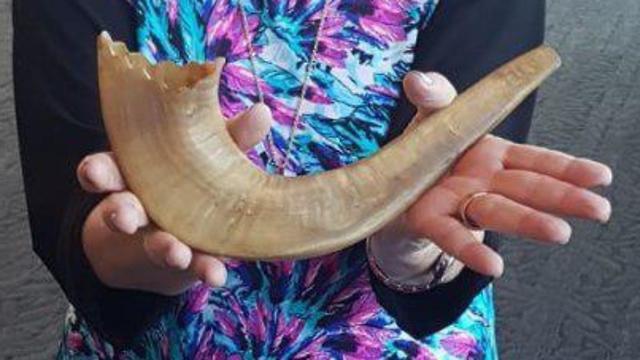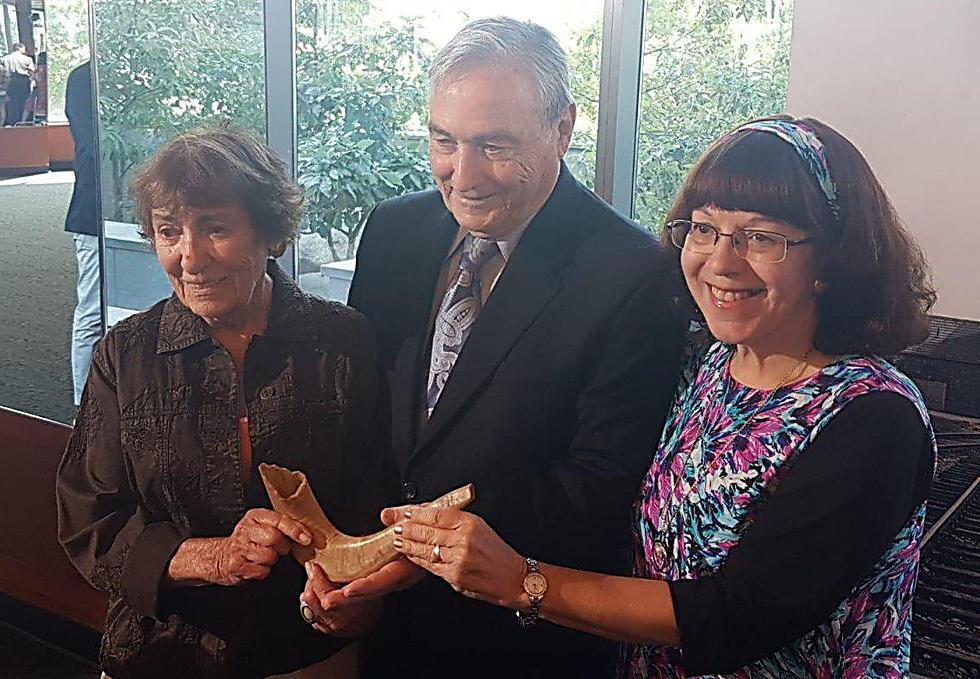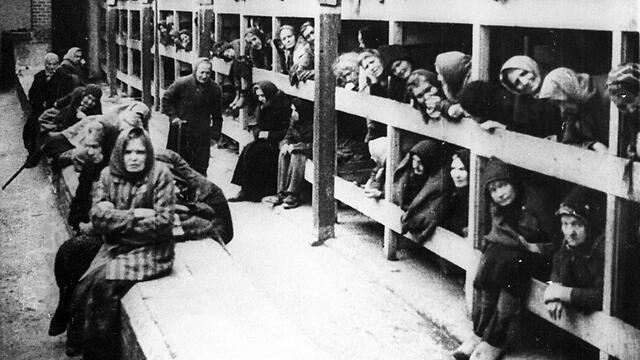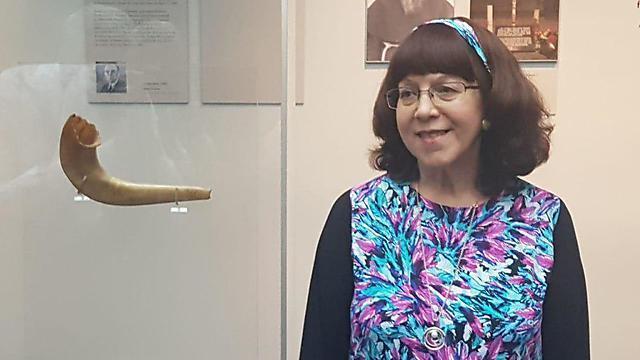Getting your Trinity Audio player ready...
By the power of their faith, and while facing mortal danger to their lives, the prisoners of Auschwitz were able to perform the commandment of blowing the shofar on Rosh Hashanah (Jewish New Year), using a small ram's horn made in secret by the prisoners themselves.
and Twitter
This is according to Dr. Judith Tydor Baumel-Schwartz, director of the Schulman School of Basic Jewish Studies and professor of Jewish History at Bar Ilan University, and the testimony of her late father and Holocaust survivor, Yehezkel (Chaskel) Tydor.
On Monday, in a celebratory event, Baumel-Schwartz loaned the shofar, which was kept safe by her father all these years, to the Jewish heritage museum in New York.
The shofar, measuring just 10-inch (25 cm), is featured as part of a traveling exhibition from Poland titled "Auschwitz. Not Long Ago. Not Far Away ."
According to Baumel-Schwartz, her father was a prisoner in one of the 41 Auschwitz subcamps, and was entrusted as a work dispatcher.
As part of his job, on Rosh Hashanah 1944, Chaskel arranged to have prisoners work in remote locations, in the hopes they'd be able to safely pray without being caught.
He didn't know they had something very dear in their possession though, and when they returned, one of the prisoners confided with Chaskel that they created a shofar, and had even managed to use it.
In 1945, as the Nazi soldiers decimated Auschwitz and fled the approaching Russian forces, the shofar was given to Chaskel for safekeeping by another prisoner.
Baumel-Schwartz decided to loan the shofar after meeting with Dr. Robert Jan van Pelt, the exhibition's curator and an expert on the Holocaust, in Manhattan.
"I met with Dr. van Pelt four months ago, and he promised me a private tour of the exhibition," Baumel-Schwartz said, "when we reached the 'resistance' display, I saw nothing there except Jewish tzitzits (Jewish fringed garments).
"When I voiced my surprise, Dr. van Pelt said there was nothing saved to illustrate the resistance of the Jewish prisoners of Auschwitz.
When I told him about the shofar," she said, "he practically begged for me to loan the shofar to the exhibit.
"This was my chance to honor my father 26 years after his death, and to prove the bravery and conviction of the Auschwitz prisoners."





